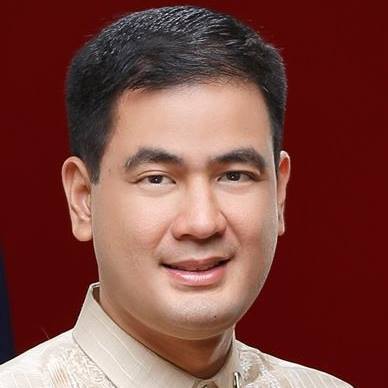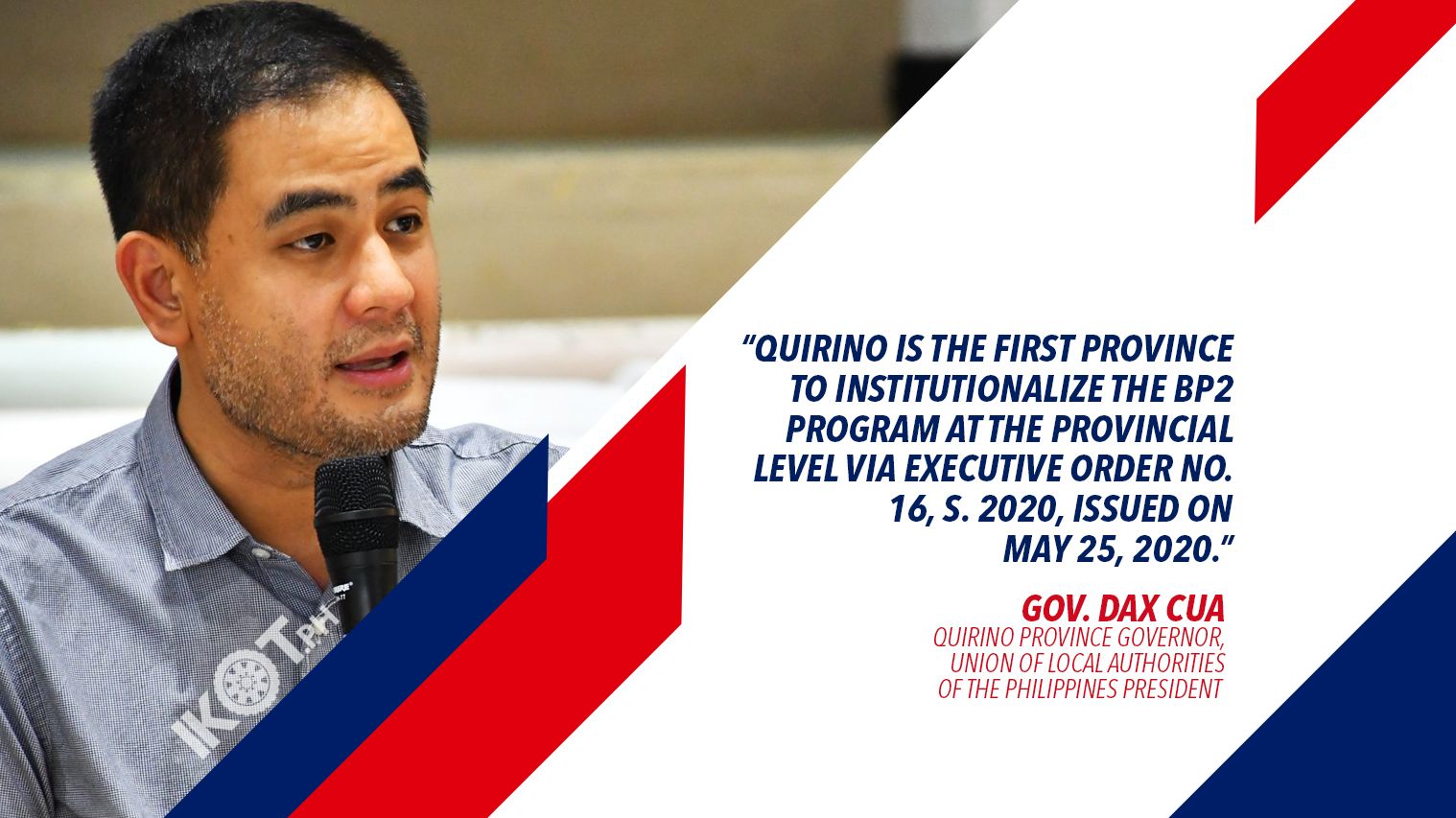Union of Local Authorities of the Philippines (ULAP) President and Quirino Governor Dax Cua urged fellow governors to institutionalize the government’s “Balik Probinsya, Bagong Pag-Asa Program” (BP2) at the provincial level, stressing on Thursday that the support and cooperation of local government units (LGUs) would be crucial in the Duterte Administration’s efforts to promote economic development in the regions.
Formed in 1998, ULAP is the umbrella organization of all leagues of LGUs and locally elected government officials in the country.
“Provincial governments should be working within their jurisdictions so that they are better prepared to work with the national government.”
Cua––who is also National Chairman of the League of Provinces of the Philippines––pointed out that provincial governments “should be working within their jurisdictions so that they are better prepared to work with the national government as it rolls out the BP2 program in the coming months.”

According to Cua, Quirino is the first province to institutionalize the BP2 program at the provincial level via Executive Order No. 16, s. 2020, issued on May 25, 2020.
“The Quirino EO establishes the Quirino BP2 Task Force, the provincial counterpart of the BP2 Council established by EO No. 114, s. 2020, the issuance signed last May by President Rodrigo Duterte.”
The Quirino EO establishes the Quirino BP2 Task Force, the provincial counterpart of the BP2 Council established by EO No. 114, s. 2020, the issuance signed last May by President Rodrigo Duterte that institutionalizes the BP2 program at the national level.
One of the functions of the Quirino BP2 Task Force is to “engage, consult and coordinate with the national government in the formulation of policies, and implementation of the components of the BP2 Program that will allow resource-sharing arrangements through, among others, co-financing mechanisms with development partners.”
“The Quirino BP2 Task Force is chaired by Cua, and among its members are the congressional representative of Quirino, its vice governor, mayors, the provincial directors of national agencies, and representatives from various sectors.”
The Quirino BP2 Task Force is chaired by Cua, and among its members are the congressional representative of Quirino, its vice governor, mayors, the provincial directors of national agencies, and representatives from various sectors.
Cua, who obtained his Business Administration degree from the University of the Philippines, said he welcomed the Duterte Administration’s “serious efforts to adopt a development framework that puts an emphasis on the regions outside Metro Manila in order to encourage our people to move to the provinces.
“For decades, growth has been skewed toward the National Capital Region (NCR) and areas close to it. Metro Manila accounts for close to 40% of the nation’s gross domestic product (GDP) but only has just over 12% of the Philippine population,” said the former three-term legislator.
The former Chairperson of the House of Representatives Committee on Ways and Means lamented that “the per capita gross regional development product (GRDP) figures of Metro Manila compared to the country’s other regions further emphasize this disparity.
Cua said that data from the Philippine Statistics Authority reveals that the per capita GRDP of NCR in 2018 was 253,893 pesos––almost 200% higher than the per capita GRDP national average of 86,370 pesos.
“The disparity is even higher in some regions, such as Cagayan Valley; NCR’s per capita GRDP is more than five times higher than Region 2. Clearly, those of us in the provinces must work with the national government to close this gap, and institutionalizing the BP2 program at the national and provincial levels could be the first concrete step to achieving this.”

